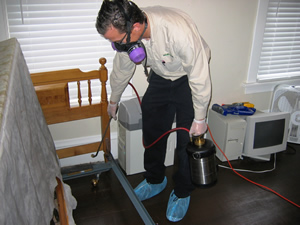Reliable A1 Bed Bug Treatment Houston - Proven Methods
Reliable A1 Bed Bug Treatment Houston - Proven Methods
Blog Article
Understanding the Lifecycle of Bugs for Targeted Control Techniques
Understanding the lifecycle of bugs is a basic facet of reliable insect administration approaches. Through a much deeper understanding of how pests develop and grow, customized control methods can be designed to deal with details factors in their lifecycle, inevitably leading to more effective parasite monitoring results.
Value of Understanding Insect Lifecycle
Understanding the lifecycle of insects is vital for developing effective and targeted control strategies in parasite monitoring. By comprehending the various phases an insect goes via from egg to grownup, pest control professionals can recognize vulnerable points in the lifecycle where treatment can be most effective. Knowing when larvae are most energetic can assist determine the optimal timing for using larvicides. In addition, recognizing the lifespan of a parasite species can aid in forecasting populace development patterns and potential problem threats.
Additionally, recognizing the details environmental problems needed for each stage of the insect's lifecycle can assist choices on environment adjustment or exclusion approaches to decrease and interrupt the lifecycle insect populaces. This knowledge makes it possible for pest monitoring specialists to carry out positive steps as opposed to relying exclusively on responsive therapies, bring about more long-term and sustainable parasite control remedies. Eventually, a comprehensive understanding of bug lifecycles equips parasite control professionals to tailor their methods properly, reducing environmental impacts and making best use of control results.
Key Stages in Insect Advancement
To successfully execute targeted control methods in parasite administration, a vital facet lies in comprehensively recognizing and comprehending the key phases in insect growth. Pest growth normally is composed of numerous key stages that are crucial for their lifecycle and monitoring.

Susceptabilities in Parasite Lifecycle
Throughout the numerous phases of an insect's lifecycle, distinct susceptabilities emerge that can be tactically targeted for efficient control measures. One essential vulnerability exists in the egg phase, where pests are usually more vulnerable to specific pesticides or organic control agents due to their soft outer covering, making them much easier targets for treatment. In addition, the larval or nymph stage presents susceptabilities as insects go through quick growth and advancement, requiring high power usage that can be made use of by disrupting their food sources or presenting development preventions. Pupal phases, characterized by immobility and makeover, use a window for targeted control through physical barriers or particular treatments that prevent effective appearance. Grown-up pests, while much more resistant due to their reproductive capacity, can still be prone throughout breeding or egg-laying activities, which can be interrupted via scent catches or sanitation strategies. Recognizing these vulnerabilities in the bug lifecycle is crucial for creating effective and specific control methods that effectively manage insect populations while minimizing ecological influence.
Executing Targeted Control Actions

Implementing targeted control measures generally entails a multi-faceted approach. This may include habitat modification to make the atmosphere much less congenial to bugs, such as eliminating standing water for mosquito control or sealing entrance points for rats. Additionally, biological control techniques can be utilized, where all-natural killers or pathogens are presented to maintain insect populaces in check.
Integrated Pest Monitoring (IPM) methods that combine numerous control steps in a coordinated and lasting way are frequently the most reliable in attaining long-term parasite administration objectives. By carrying out targeted control steps based on a comprehensive understanding of parasite lifecycles, bug populations can be properly managed while decreasing risks to human health and wellness and the environment.
Improved Parasite Management Practices

Moreover, the consolidation of organic control representatives, such as natural killers or pathogens of insects, can help in reducing reliance on chemical pesticides and promote a more well balanced ecological community. Carrying out physical barriers and traps can also become part of improved insect administration methods, using non-toxic and targeted services for pest control. Additionally, the usage of scents and various other semiochemicals can interrupt pest breeding patterns and communication, bring about decreased bug populations gradually.
Conclusion
In verdict, understanding the lifecycle of bugs is vital for reliable insect monitoring strategies. By determining vital helpful resources phases in parasite development and susceptabilities in their lifecycle, targeted control actions can be executed to lessen pest populations. Improved bug monitoring practices can assist reduce the dependence on broad-spectrum pesticides and promote even more environmentally pleasant and sustainable bug control methods. This understanding plays a vital function in maintaining healthy communities and farming productivity.
Comprehending the lifecycle of insects is crucial for establishing reliable and targeted control strategies in pest monitoring. By understanding the different stages a pest goes via from egg to grownup, bug control experts can identify at risk factors in the lifecycle where treatment can be most successful. Inevitably, a thorough understanding of parasite lifecycles encourages insect control practitioners to tailor their techniques successfully, maximizing and minimizing ecological influences control end results.
By carrying out targeted pop over to this web-site control procedures based on a detailed understanding of parasite lifecycles, bug populations can be efficiently controlled while minimizing risks to human wellness and the setting.
By determining key stages in parasite growth and vulnerabilities in their lifecycle, targeted control steps can be implemented to decrease parasite populaces.
Report this page